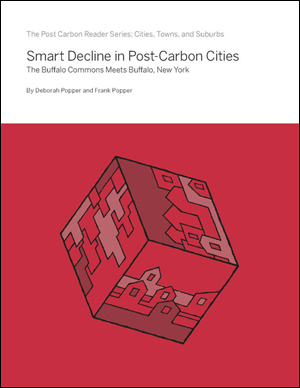
Smart Decline
July 20, 2010
In 2002, after decades of trying to restart economic development like most other Rust Belt cities, Youngstown made a radical change in approach. The city began devising a transformative plan to encourage some neighborhoods to keep emptying and their vegetation to return. The plan, still early in its implementation as we write (March 2010), would raze underoccupied structures, streets, and alleys to form larger land parcels and home lots, more green space, and new parks.
At the heart of the plan is Youngstown’s acceptance of decline and attempt to use it to improve the remaining buildings, infrastructure, and services by strategically concentrating them. A perverse measure of the nation’s (and the environmental professions’) neglect of shrinkage possibilities showed up in the media reception of Youngstown’s 2005 plan. Accepting shrinkage seemed so unusual that within two years the city’s approach appeared on the front pages of USA Today and the Wall Street Journal, on National Public Radio’s Morning Edition, on the Voice of America, and on the New York Times Magazine’s list of 2006’s most interesting ideas.
The shrinkage policies of Braddock, Pennsylvania, a small town near Pittsburgh, won its mayor, John Fetterman, the cover of the November 2009 Atlantic’s “100 Brave Thinkers” issue. The town’s population losses—90 percent, according to the Atlantic—call for extreme approaches, and Fetterman has emphasized art, turning eyesores into murals and bidding for artists to relocate there.
This is a chapter from The Post Carbon Reader: Managing the 21st Century’s Sustainability Crises (2010).
